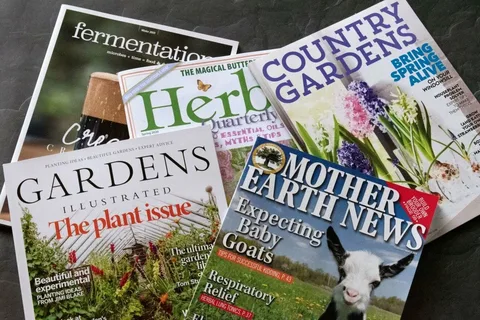There’s something deeply calming about a Japanese garden. The quiet simplicity, the balance, the way every stone, leaf, and curve feels intentional—it’s no accident. The Japanese have been perfecting the art of gardening for centuries. It’s not just about growing plants; it’s about nurturing life and finding harmony in the soil beneath your hands. And honestly, that’s something every gardener—whether on a small balcony or a sprawling farm—can learn from.
I still remember the first time I used a Japanese pruning shear. It wasn’t fancy. Just sharp, sturdy, and smooth. But when I clipped a branch, it cut clean, like slicing through silk. No struggle, no tearing. That’s when I realized: good tools make gardening feel less like work and more like meditation. Over the years, I’ve added a few more Japanese tools and plants to my garden, and let me tell you, they’ve changed the way I grow.
If you’ve ever wondered why your neighbor’s azaleas look picture-perfect or how those intricate moss gardens stay lush, the answer might lie in the best Japanese gardening tools and the plant varieties Japan is known for.
Top Japanese Tools and Plants for Your Garden
These tools and plants aren’t just pretty—they’re practical, durable, and crafted with the kind of care that makes a difference in every growing season. So, let’s dig in.
1. Hori Hori Knife – The Gardener’s Everything Tool
If you buy only one Japanese tool, make it the Hori Hori knife. This tool is part knife, part trowel, part measuring stick. You can dig, plant bulbs, divide roots, and even cut twine—all with one tool. I carry mine everywhere around the garden.
The blade usually has a serrated edge on one side and a sharp edge on the other. It’s perfect for weeding, slicing through tough soil, or scooping compost. A friend once joked that if gardening were a wilderness sport, the Hori Hori would be the survival knife of choice—and honestly, he’s right.
Tip: Choose one with a stainless steel blade and a comfortable wooden handle. It’ll last you years if you clean it after use.
2. Japanese Pruning Shears (Okatsune)
Ever seen how Japanese gardeners prune trees so precisely that the branches almost look sculpted? Their secret is Okatsune pruning shears. These are known as some of the best Japanese gardening tools you can own.
They’re light yet incredibly strong. When you prune roses or fruit trees with them, the cuts heal faster because the blades slice cleanly instead of crushing stems. I use mine for everything—from trimming my bonsai to shaping my hibiscus shrubs.
How to Use: Always clean your shears after pruning. A dab of oil keeps the blades sharp and rust-free for decades.
3. Nisaku Weeding Sickle
Weeds. The eternal enemies of every gardener. But there’s something satisfying about slicing them out cleanly with a Japanese weeding sickle. The curved blade lets you get under the roots and pull the entire weed out in one swift motion.
When I first tried it, I thought, “Where has this been all my life?” It’s especially handy for tight spaces where a hoe can’t reach. Plus, it’s light enough to carry in your tool belt without weighing you down.
4. Japanese Garden Rake (Kumade)
This tool is iconic in Zen gardens—the Kumade, or bamboo rake. Traditionally used to rake sand in meditation gardens, it’s also perfect for smoothing soil, spreading mulch, or cleaning up fallen leaves.
If you’ve got a small garden or even a few potted plants, this rake helps you keep everything tidy without disturbing the roots. It’s gentle, lightweight, and feels like an extension of your hand.
5. Bonsai Scissors
You don’t have to be a bonsai artist to appreciate bonsai scissors. They’re excellent for delicate pruning—perfect for herbs, flowers, and small shrubs. Their design gives you precision without damaging new shoots.
When I grow mint and basil, I use these to trim them instead of regular scissors. They cut neatly, which helps the plants regrow faster and stay healthy.
6. Japanese Watering Can
Japanese watering cans are both elegant and functional. They’re designed to distribute water evenly, preventing soil erosion or root damage. Some have long spouts that help reach deep into the foliage without splashing.
I’ve got one that’s been with me for years, slightly dented but still pours like a dream. Every time I water my plants, I feel like I’m part of a quiet tradition.
7. Satsuki Azalea (Rhododendron indicum)
Now, let’s talk plants. If you want a true Japanese touch in your garden, start with Satsuki Azaleas. Their blooms are breathtaking—shades of pink, red, and white that light up any space.
They love slightly acidic soil and partial sunlight. The trick is keeping the roots moist but never waterlogged. I grow mine near a small pond, and in spring, they’re the stars of the garden.
8. Japanese Maple (Acer palmatum)
Few plants capture the spirit of Japanese gardening like the Japanese Maple. With its delicate leaves and shifting colors, it’s living art. Whether in a pot or the ground, this tree adds grace and calm wherever it stands.
They prefer well-drained soil and a spot with morning sun and afternoon shade. I’ve had mine for years, and every fall, the fiery red leaves remind me why I fell in love with gardening in the first place.
9. Bamboo (Take)
No Japanese-inspired garden is complete without bamboo. It’s versatile—you can grow it for privacy, for sound (that soft rustle in the breeze), or just for its beauty.
Choose a clumping variety if you don’t want it taking over your yard. Bamboo is also great for creating natural fences or supports for climbing plants.
10. Moss (Koke)
You might not think much about moss, but in Japan, moss is prized for its ability to create a sense of peace. It thrives in shaded, moist areas and adds softness to pathways and stones.
Try growing a small moss patch under a tree or around a water feature. It’s low-maintenance and stays green year-round—perfect for that serene, Zen-like vibe.
11. Japanese Iris (Hanashōbu)
These elegant flowers bloom in early summer and come in shades of purple, white, and blue. They love wet soil, so they’re perfect near ponds or in rain gardens.
Their long, slender leaves and striking blooms make them ideal for adding texture to your garden. And when they bloom, they’re showstoppers.
12. Camellia (Tsubaki)
The Camellia is another Japanese favorite, blooming when most other plants are resting. Its glossy green leaves and rose-like flowers bring color to winter gardens.
Keep it in slightly acidic soil and give it partial sunlight. I have a red Camellia by my gate—it’s the first thing guests notice when they arrive.
13. Pine Trees (Matsu)
In Japan, pines symbolize longevity and endurance. Miniature or full-sized, they add structure and character to any garden.
They do best in sandy soil and plenty of sunlight. Just remember to prune them regularly to maintain their shape.
14. How to Combine Japanese Tools and Plants for Harmony
Japanese gardening isn’t just about what you grow—it’s about balance. Combine best Japanese gardening tools with these plants to create a garden that feels alive and intentional.
Use a Hori Hori to plant azaleas, prune maples with Okatsune shears, and rake moss beds with a bamboo Kumade. The more you use these tools, the more you’ll understand the rhythm of your garden.
15. Real-Life Scenario: My First Zen Corner
A few years ago, I decided to create a small Zen corner in my backyard. I used the weeding sickle to clear a patch, spread fine gravel, and planted a few mosses and azaleas. Every morning, I’d rake the gravel with my Kumade rake while sipping coffee. It wasn’t fancy. But that little corner became my place of calm—a reminder that gardening is about connection, not perfection.
FAQs
Q: Where can I buy the best Japanese gardening tools?
You can find authentic Japanese tools from brands like Okatsune, Nisaku, and Niwaki on Amazon, garden specialty stores, or directly from Japanese suppliers online.
Q: Do I need special soil for Japanese plants?
Not always, but many prefer well-drained, slightly acidic soil. Adding compost or peat moss can help.
Q: Are Japanese tools worth the price?
Yes. They’re built to last for decades with proper care, making them a long-term investment for serious gardeners.
Q: Can I grow Japanese plants in small spaces?
Absolutely. Many like bonsai, moss, and azalea varieties thrive in containers and small garden setups.
A Final Thought from One Gardener to Another
Japanese gardening isn’t about copying style—it’s about embracing balance, patience, and respect for nature. Whether you’re using a Hori Hori knife to dig, trimming a bonsai with Okatsune shears, or simply sitting by your moss garden, you’re part of something ancient and peaceful.
So take your time. Feel the soil. Listen to the wind through the bamboo. Gardening, after all, isn’t about rushing—it’s about growing with your plants.



